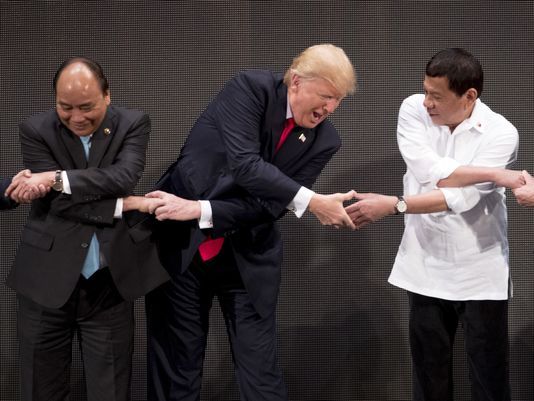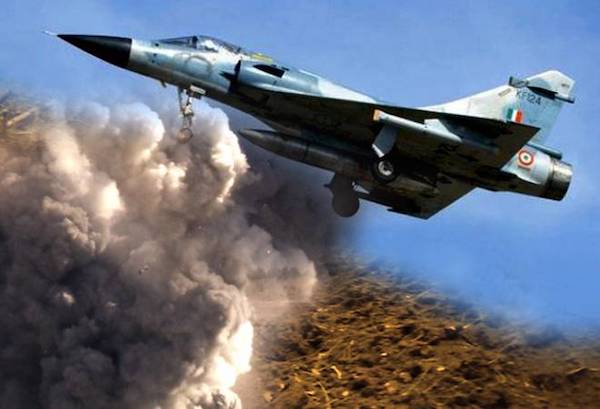
The deteriorating situation in Jammu and Kashmir, together with strained relations among the Agenda for Alliance partners in the State, obviously prompted the meeting between Chief Minister Mehbooba Mufti and Prime Minister Narendra Modi. The April 24 meeting covered various measures to deal with the violent protests that have rocked the Valley lately, but the main outcome seemed to have been that the Bharatiya Janata Party-Peoples Democratic Party alliance would continue.
 What is most crucial is to make an open and impassioned appeal for peace in the Valley accompanied by meetings and consultations at several levels. No segment should be excluded, including separatists and the Hurriyat. Some of the ideas set out in the ‘backchannel’ proposals (2005-2008) should be revived. Jobs for Kashmiri youth must be a priority and a massive job-oriented program launched. India could consider swallowing its pride and reopen talks with Pakistan, not so much hoping that Pakistan would cooperate but to assuage the ‘hard-liners’ in Kashmir. Detaching from a muscular policy to a more reasoned one has become essential”, Says the author – MK NARAYANAN.
What is most crucial is to make an open and impassioned appeal for peace in the Valley accompanied by meetings and consultations at several levels. No segment should be excluded, including separatists and the Hurriyat. Some of the ideas set out in the ‘backchannel’ proposals (2005-2008) should be revived. Jobs for Kashmiri youth must be a priority and a massive job-oriented program launched. India could consider swallowing its pride and reopen talks with Pakistan, not so much hoping that Pakistan would cooperate but to assuage the ‘hard-liners’ in Kashmir. Detaching from a muscular policy to a more reasoned one has become essential”, Says the author – MK NARAYANAN.
The BJP-PDP ‘soft alliance’ may have survived another rough patch. Kashmir, however, does not seem to be going anywhere. This may be par for the course as far as J&K is concerned, for in the evaluation of sceptics the future of Kashmir is almost always more of the same. The argument is that Delhi is, by and large, uninterested in changing its course, and is content with providing puerile explanations for the lives lost and the recurring crises that afflict the State. For alliance partner PDP, having lost its way as far as governance is concerned, it is currently more intent on clinging to the Alliance and the Srinagar gaddi. The future of Kashmir, hence, is nobody’s concern.
If, during the latter part of 2016, Kashmir was portrayed as confronting one of its gravest crises ever, the situation in the Valley today is to all intents and purposes far more complex. The violent protests, with a high number of killed and injured, have hardly come down; the patterns set following the death of Burhan Wani in an encounter in July 2016 also continue.
No one in the Establishment, either in Srinagar or in Delhi, seems to know why the violence is continuing. The unchanging nature of the Kashmir scene since late 2016 and extending into 2017 is beginning to worry even those who have for long been inured to violence and ideas of a change in plan, their sole concern having been ensuring that Kashmir remains an integral part of India.
Today it is not so much the dreaded foreign militants as the ‘unattached militants’ who are responsible for the bulk of the current wave of violence. They do not appear to have a direct link to pro-Pakistan militant outfits such as the Lashkar-e-Taiba and Jaish-e-Mohammad, though some linkages with the local Hizbul Mujahideen may exist.
The leaders are unrecognizable, and specific causes undecipherable. Pakistan has not moved away and continues to instigate violence, the latest attack being on an Army camp in Kupwara (in which three Army men were killed), patterned on earlier attacks in Uri and Pathankot. The new threat comes from an entirely different source.
Consequently, the refrain of external instigation and Pakistan’s role is inadequate to explain the current imbroglio. Urging the security forces to exercise restraint and avoid collateral damage during operations also makes little sense. The issues are far deeper than urging all stakeholders to allay the apprehensions and misgivings of the Kashmir youth. Something very different has occurred and something new needs to be attempted.
The unorganized – and even divided – nature of the protest movement carries the danger that it could turn into an Intifada, a kind of people’s uprising with no known leaders, and increasing numbers of trouble-makers, all portraying themselves as leaders of the movement. It carries deep risks for both domestic and international reasons. It is something that India must prevent before it actually takes shape, and ‘martyrdom’ becomes the new normal.
The moot question is whether India can, and is willing, to handle the truth – bite the bullet in other words. India could continue to acknowledge that those responsible for the past violence have not abandoned the scene, but will need to admit at the same time that a change is taking place behind the scene. New faces of militancy had emerged. Amongst these are a large number who were previously seen as India’s hope in the battle for normalcy in Kashmir, and were willing to stake their future in India.
Since 2008, the Valley has witnessed several waves of unrest. In 2008 and 2010 Kashmir went through a particularly difficult period, but the main instigators then were those who were trained by Pakistan, and the bulk of those involved were inspired by Pakistan. Since 2016, however, it is the ‘unattached militant’ who has been in the forefront of the struggle. What could be the explanation for this
As in many other areas, truth tends to be sporadic here, and reality obscure. It would seem that after the dangerous 1990s, militancy has once again regained social acceptance. To an ever increasing number of youth, the profile of violence stands in contrast to the hypocritical utterances of the authorities in Srinagar and Delhi.
As of today, the Agenda for Alliance, the PDP, Hurriyat leaders like Syed Ali Shah Geelani and Mirwaiz Umar Farooq, the erstwhile secessionist leaders like Yasin Malik all stand marginalized. Anger is the dominant sentiment, as epitomized by the violent protests and the near total boycott of the recent Srinagar poll. The message sent out is clear. Peace cannot be enforced by authoritarian means or by fiat.
Episode upon episode, Kashmir is steadily unravelling. Normalcy is tending to be episodic. Over and above this is the emergence of what can only be termed as ‘strategic falsehood’. Social media tweets and retweets are altering ground realities. Hyperbole is making a mockery of truth and providing scope for still more lies. The only realities are: the dead, the wounded, the martyr and, of course, the authorities who are the villains.
The authorities are losing the propaganda war. Social media is putting out its own account of events and encounters, aided and abetted by several thousands of social media accounts operating from across the border. This is what is providing oxygen to the ‘unattached militant’, and more significantly, leading to a ‘rainbow coalition’ between the ‘unattached militant’ and the ‘Deep State’ in Pakistan.
Counsels of despair are not of any use. Putting the blame on the ruling coalition for the present morass in Kashmir, as former Chief Minister Farooq Abdullah has done recently, hardly helps. His assertion that India is heading towards disaster is again of little use. The suggestions that he has to offer are a repeat of what has previously been said and tried.
Restraining and restricting Pakistan’s ability to fish in troubled waters will not be easy. Any expectation that the U.S. would lean sufficiently on Pakistan to impel the latter to avoid meddling in Kashmir needs to be given up. Pakistan is crucial for the U.S. to sort out its Afghan imbroglio. Within Kashmir, the Hurriyat has, today, lost much of its relevance. The PDP-BJP alliance is floundering and has few real insights into what is taking place. Delhi seems far removed from the reality of the grim scenario unfolding in the Valley. Leaving matters to intelligence and security agencies, and the Army would be the least viable option.
Where do we go from here? To begin with, policymakers must ponder deeply as to why ordinary citizens are prepared to gravitate to areas where actual encounters are taking place risking death and injury even though they are not involved in the protests.
Resorting to pyrotechnics such as the novel idea of tying a protester to the bonnet of a security vehicle and driving it through a crowd of agitators are best avoided. Today’s agitators are angry and reckless, but it is they who are redefining the nature of protests and reshaping the contours of the movement.
The situation thus demands a complete makeover. There is a need to go back to the drawing board and effect changes in Kashmir’s Constitution that were introduced post the 1960s. This would help establish a measure of credibility to India’s claims that it is not seeking to undermine the autonomy that Kashmir prizes so much. What these are will need to be carefully worked out by teams of constitutional and other experts.
Immediately, however, what is most crucial is to make an open and impassioned appeal for peace in the Valley accompanied by meetings and consultations at several levels. No segment should be excluded, including separatists and the Hurriyat. Some of the ideas set out in the ‘backchannel’ proposals (2005-2008) should be revived. Jobs for Kashmiri youth must be a priority and a massive job-oriented program launched. India could consider swallowing its pride and reopen talks with Pakistan, not so much hoping that Pakistan would cooperate but to assuage the ‘hard-liners’ in Kashmir. Detaching from a muscular policy to a more reasoned one has become essential.
(The author is a former National Security Adviser and a former Governor of West Bengal)





Be the first to comment